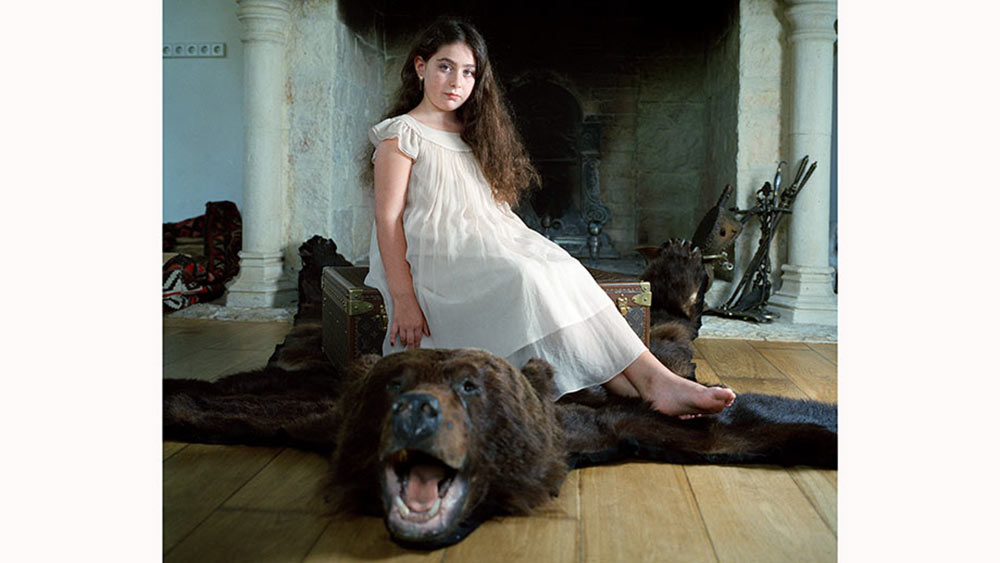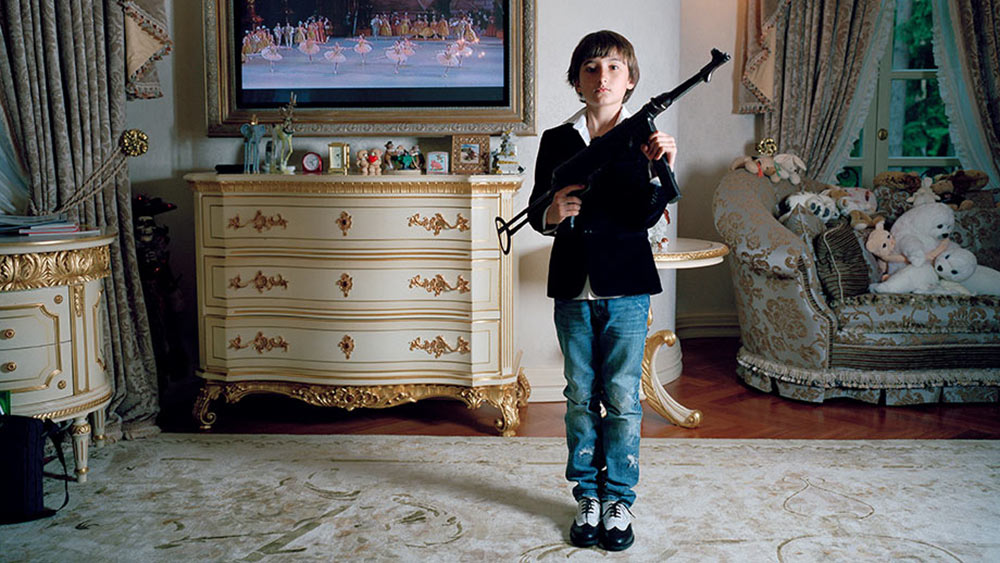Navigation auf uzh.ch
Navigation auf uzh.ch

CAROLA JÄGGI: The pictures are great. They’re in the tradition of portrait painters such as Holbein or Velázquez, but at the same time they’re also very ambivalent.
JÄGGI: One of the photos shows a boy holding a Kalashnikov. You can see cuddly toys in the background and a screen showing a ballet recital he’s apparently interested in. The boy is posing in the foreground with the rifle. Here the ambivalence is obvious. The weapon is one of his toys. The question is how he came to own it. The furniture in his room is in the style of Gelsenkirchen baroque – certainly not inherited, but newly purchased. It’d be interesting to know what becomes of the children portrayed by Anna Skladmann. Will these "little adults" go on to assume the roles that they’re playing in the pictures?
JÄGGI: It’s relatively conventional, with codes that have been used since 19th century portrait painting. This is how the portrayed set themselves apart from the nouveau riche, who exhibit their bling, flashy cars and swanky watches, and make a show of being rich. Skladmann’s pictures present the elite, people who want to show that they’re part of the Establishment. The photo of the girl posing with a suitcase and bearskin in front of the fire place is another interesting picture. The bear may be cuddly, but above all it’s a hunting trophy, and hunting has long been a privilege of the aristocracy. Such associations to landed gentry and junkerdom have famously also been used by Vladimir Putin.

JÄGGI: Absolutely, the people believe they’re cultured and want to show it. In a way, the pictures allude to the time of the tsars – they’re almost neo-monarchical. Drawing rooms with large chandeliers or a private movie theater – it’s the stuff of princes and princesses. The people who live in these rooms know they’re not “old money”, or even members of the aristocracy, but they still present themselves as if they were.
JÄGGI: Exactly, it’s fake aristocratic tradition. One of my colleagues comes to mind who’s the complete opposite of this. He’s from a well-off English family and often wears scruffy tweed jackets and crumpled trousers. Despite his outfit, everybody who knows him is actually aware of his wealth. We’re able to interpret such codes, whereas in Dubai he’d perhaps be mistaken for a poor man.
JÄGGI: I think so, yes. I can imagine that there are similar villas in the tax havens of Switzerland.
JÄGGI: People in the Middle Ages also tended to invoke tradition to demonstrate their wealth and power. The Temple of Clitumnus is a good example of this. It’s a temple near Spoleto in Italy that I researched many years ago. At first glance it appears to be antique, but it was actually built in the 7th century. The temple was commissioned by the Lombards, who are comparable to the Russian families pictured in Skladmann’s work.
JÄGGI: The Lombards conquered Italy in the late 6th century. They didn’t have their own tradition of building stone structures, and instead lived in wooden huts or tents. The Lombards took power in Italy, of course, a country with a rich culture and a long history. But those who hold power are only credible if they also represent themselves accordingly. So as the new rulers, the Lombards were faced with having to build palaces. But how? Their solution was to latch on to antiquity – and thus to a great tradition that they didn't have.
JÄGGI: Exactly, of an era that came before the one they were living in – like in the pictures of Anna Skladmann. It was an attempt to legitimize their position as the new rulers. But the Lombards fell back on antique forms of representation without really understanding them. You can see that by looking at the temple near Spoleto. At first glance the temple’s decor appears to be antique. If you take a closer look though, you’ll notice that all the elements of this antique presentation are slightly over the top – just like in the villas of today’s nouveau riche.
JÄGGI: Christianity led to a kind of ethical reboot. There’s a famous passage in the Bible that says it’s easier for a camel to go through the eye of a needle than for a rich person to enter the kingdom of God. This thinking shaped medieval Christian society: Wealth – at least the kind not used for the benefit of the general population – was considered immoral. This had a great influence on western Christian culture for a long time.
JÄGGI: Of course there were rich people in the Middle Ages, too. But wealth was morally elevated in that people donated at least some their wealth to the church as endowments. The rich would for example endow a priest with an altar, and the priest would in turn say mass for them regularly and pray that they’d be shown mercy on Judgment Day – a pious insurance scheme for the afterworld, if you will.
JÄGGI: By all means. In the Middle Ages it was important that an endowment was also a memorial for the benefactor’s name and person. That hasn’t changed. Donations aren’t anonymous. They’re a means for people to build a good reputation. The same goes for art collectors who make their collections available to museums. It’s a sublimated form of exhibiting your wealth.